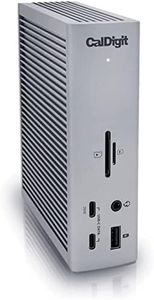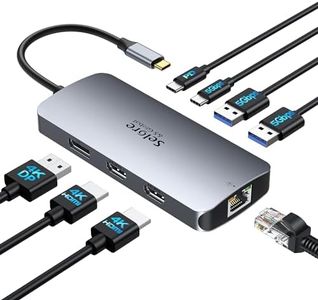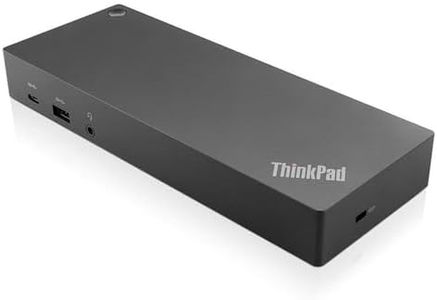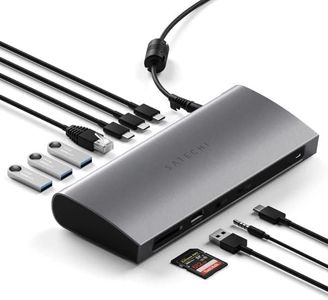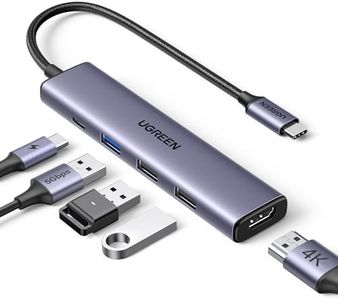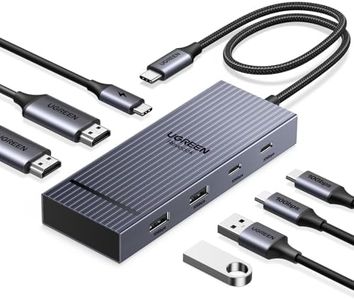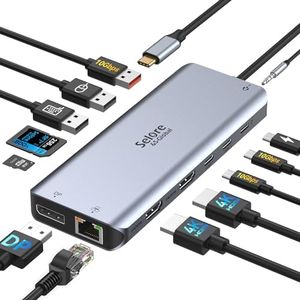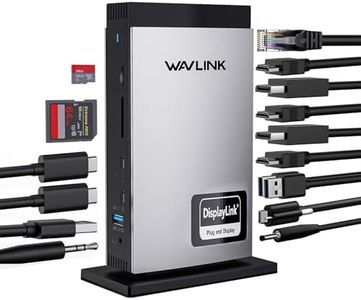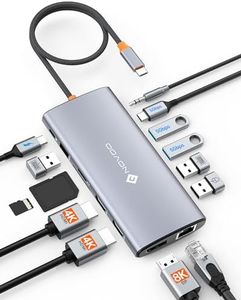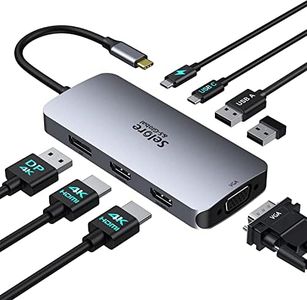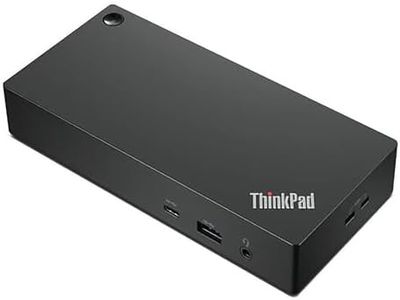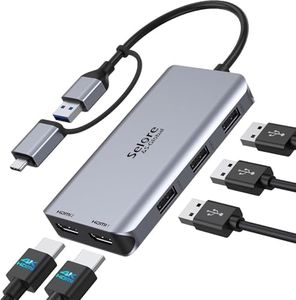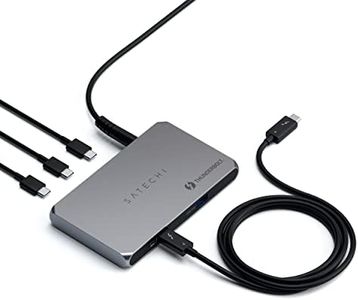We Use CookiesWe use cookies to enhance the security, performance,
functionality and for analytical and promotional activities. By continuing to browse this site you
are agreeing to our privacy policy
10 Best MacBook Docking Stations
From leading brands and best sellers available on the web.Buying Guide for the Best MacBook Docking Stations
Choosing the right MacBook docking station can make your work or entertainment setup much smoother and more convenient. A good docking station lets you easily connect your MacBook to multiple devices, such as monitors, keyboards, storage drives, and other peripherals, all through a single hub. When picking a docking station, it’s important to match your needs—like which devices you plan to connect, your workspace size, and how often you move around—with the features of the dock. By understanding the key specs, you’ll be able to select a docking station that truly fits your routine and makes your computing experience efficient and enjoyable.Port SelectionPort selection refers to both the number and types of connection points available on the docking station, such as USB-A, USB-C, HDMI, DisplayPort, Ethernet, and audio jacks. This is crucial because the ports determine what devices (like monitors, external drives, or printers) you can connect at one time. If you only need a few connections, a simpler docking station may suffice, but if you plan to connect multiple monitors, accessories, and network cables, you’ll need a dock with a wider variety of ports. Think ahead about your setup: list the things you connect most often and make sure the docking station supports all of them.
Power Delivery (PD)Power Delivery indicates whether the docking station can charge your MacBook while it's connected. This is measured in watts (W) and determines how much power the dock can supply to your laptop. Lower wattage (around 45-60W) is fine for smaller MacBooks or light tasks, but 85W or higher is better for demanding models, larger screen sizes, or when you need fast charging. Consider the wattage your MacBook requires and ensure the docking station can supply at least that much power to avoid slow charging or battery drain.
Display Output SupportDisplay output support defines how many external monitors you can connect and at what resolution and refresh rate. Not all docks support multiple or high-resolution displays; some work with one display at 4K, others with two or even three monitors but at lower resolutions. If you just need a single monitor, most basic docks cover this. For two or more monitors, especially at 4K or above, look for a dock that specifically lists these features. Consider your work or entertainment needs—multitaskers, designers, or gamers might want higher resolution and more displays.
Connection InterfaceThe connection interface is how the docking station physically connects to your MacBook—most commonly via Thunderbolt, USB-C, or USB-A. Thunderbolt offers the fastest speeds and greatest versatility, supporting high-speed data and multiple displays, but only works with Thunderbolt-compatible MacBooks. USB-C is very common and compatible with most modern MacBooks, offering good speed and flexibility. Select a dock that matches your MacBook’s available port for full compatibility and best performance.
Form Factor and DesignForm factor and design describe the size, shape, and placement options of the docking station—whether it’s a compact travel dock, a wedge that props up your laptop, or a stationary hub that sits on your desk. Portability is key if you travel often or need a light setup; a smaller, lighter dock is best. For a permanent workspace, a larger dock with more features and stability might be more convenient. Also, consider cable management and whether the dock will have a neat appearance on your desk.
CompatibilityCompatibility covers which models and operating systems the docking station supports. Not all docks work with every MacBook generation or with certain software features like fast charging or dual displays. Always check that the dock supports your MacBook’s year and model, as well as the operating system you use. Some docks can work across Mac and Windows devices, which is helpful if you use multiple laptop brands.
